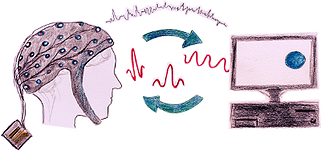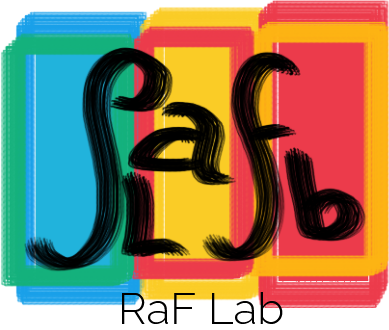Brain-computer interface
“Brain-Computer Interfaces (BCIs) are systems that enable a person to manipulate an external device with only brain activity, often using ElectroEncephaloGraphgy (EEG). Although there is great medical potential (communication and mobility assistance, as well as neuro-rehabilitation of those who lost motor functions), BCIs are rarely used outside of laboratories. This is mostly due to users’ variability from their brain morphology to their changeable psychological states, making it impossible to create one system that works with high success for all. The success of a BCI depends tremendously on the user’s ability to focus to give mental commands, and the machine’s ability to decode such mental commands. ” – Jelena Mladenović

In RaF Lab we are teaching students EEG-based BCI basics (Motor Imagery and P300 with openViBE).
RAF Students’ Projects
Making BCI games – led by prof Jelena Mladenović
by RAF student, Nemanja Nikolčević
Penguin BCI
Using EEG (Smarting Mobi), OpenViBE 3.3, Unity 2020, and LSL4Unity, one can play a video game by imagining left-right hand movements, known as Motor Imagery BCI. Here we move a penguin left-right to catch fish falling from the sky.
by RAF student, Dragan Micić
Race car BCI
Using EEG (mbt Smarting Mobi), OpenViBE 3.3, Unity 2020, and LSL4Unity, one can play a video game by imagining left-right hand movements, known as Motor Imagery BCI. Here we move a race car to avoid obstacles and catch coins.
by RAF student Novak Jelić
Sliding Dice BCI
Using EMG (Muse and BlueMuse), OpenViBE 3.3, Unity 2020, and LSL4Unity, one can play a video game by moving eyebrows. Here we move a dice left and right to avoid obstacles and catch coins.
by Marija Gladović
Investigating the effects of screens on sleep and cognition
We designed an experiment to verify the influence of phone screens on students’ sleep and memory. With EEG (Smarting Mobi) we are to see the physiological implications as well as behavioral ones (memory tests).

